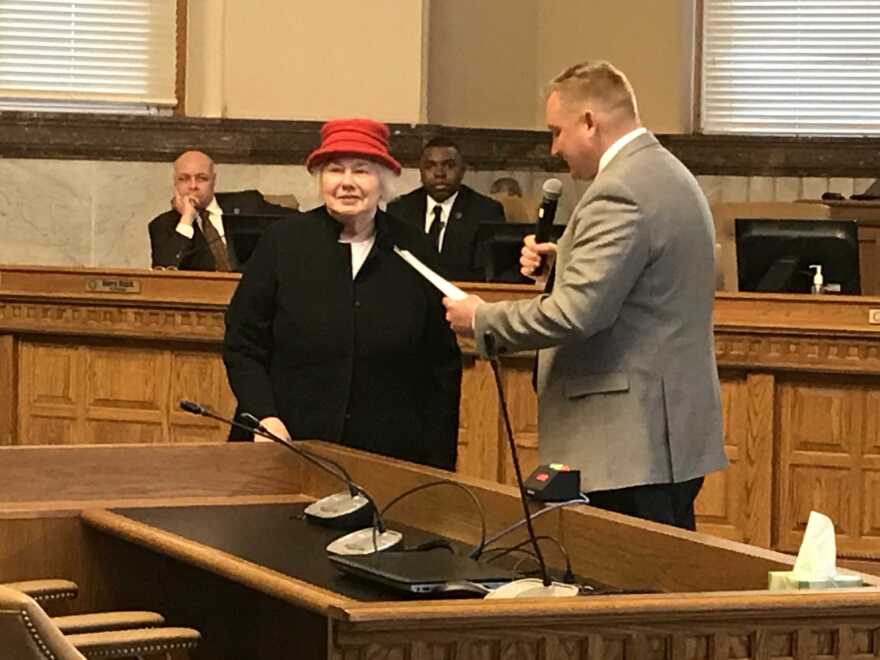Cincinnati City Council passed six resolutions last month, all in honor of Pride Month. The six resolutions included Council member Reggie Harris’ recognition of some residents for their LGBTQ+ advocacy work. But the passage of a resolution isn’t all sunshine and rainbows. A resolution regarding a ceasefire in Israel’s war in Palestine held in February created intense debate among Council members and the public.
So what do these resolutions actually do? How do they differ from other government awards, like proclamations? And why should they matter to residents?
What is a resolution?
A resolution is a formal written expression of the opinion or will of a legislature, according to the Ohio Senate website. The subject of a resolution is such that it would not constitute a statute, which is law. A resolution can be divided in three categories: simple, concurrent (or legislative) and joint.
Simple resolutions are like those awarded during Pride Month to individuals and businesses for their commitments and contributions to the LGBTQ+ community in Cincinnati.
“The mayor and this Council hereby recognize Bloom OTR and their drag cast and the Melanin Magic Drag King Night hosted by Smoke and Queers for their committed work to supporting the LGBTQ+ community through charity drag shows and the establishment of fun, safe spaces for queer joy, love and this art to thrive,” Council member Meeka Owens said in a June meeting.
RELATED: Council under pressure to take a stance on the conflict in Israel and Gaza
“Thank you to each and every one of you for everything that you do for our community. You are certainly a living reminder that we can be whoever we want to be, and therefore there's no reason to fear the beauty inside of all of us.”
Concurrent resolutions, also known as legislative resolutions, are like those used to declare political positions on large scale issues like international affairs. These resolutions can be informal or legally binding.
“The city of Cincinnati, unfortunately, does not have direct control of what's happening in Gaza. What we do have control over is how we treat each other,” Council member Anna Albi said in a May resolution debate. “I hope the message of this (World Kaffiyeh Day) resolution to combat stereotypes and condemning hate is what we take away from today.”
The resolution passed after an amendment made by Council.
Joint resolutions are least common in local government as they are used to alter the Ohio or U.S. constitutions.
Who can ask for a resolution?
According to David Mann, a former Cincinnati mayor and Council member, resolutions are acts of the city legislature; however, citizens can also propose resolutions to their representatives for consideration.
“That's part of the democratic process, that you can communicate with your council member and ask your council member to take action,” Mann said. “A good council member will at least consider what you're proposing.”
Who awards resolutions?
Resolutions can only be initiated by members of City Council. A simple resolution does not require a vote from the body, while concurrent resolutions require consideration by committees and a vote by the full council body. Concurrent resolutions must also be presented at three council meetings, unless rules are suspended, before a vote of passage by a majority.
Who can receive a resolution?
According to Mann, council may honor individuals for achievements or contributions to their community; organizations, to recognize their work or celebrate anniversaries; employees, to acknowledge their service to the city; or groups a council member wants to express support for with a resolution.
RELATED: What does a National Historic designation do?
What’s the difference between a resolution and a proclamation?
While resolutions and proclamations both serve as a way of recognizing citizens’ achievements, Mann said their biggest difference is how the award recipients are nominated.
“A proclamation is a document that is signed solely by the mayor and it can say pretty much whatever the mayor decides is appropriate for it to say,” Mann said. Resolutions, by contrast, are “initiated by members of council and presented for a vote,” he added.
What is a proclamation?

Cincinnati Mayor Aftab Pureval’s website states his office awards proclamations as ceremonial documents to recognize special occasions or outstanding accomplishments that are directly related to the city of Cincinnati and Cincinnati residents.
As mayor, Mann said he frequently used proclamations as a way to be involved in the community he served.
“Part of being a good officeholder and being a successful continuing officeholder is to be in touch with the people in the community. Persuade the people in the community that you care about them, that you're in touch with them, that you want to serve them, you have their interests in mind,” Mann said. “(When you give a proclamation) you're doing something the mayor only can do.”
Who can ask for a proclamation?
While a mayor can nominate a citizen or business for a proclamation themselves, Mann said Cincinnati residents outside of office can also nominate individuals. The exception to this process being that an individual cannot nominate themselves.
From 2018: Katie Laur, bluegrass pioneer, honored by city
Other proclamation considerations include the mayor’s right to modify or deny any request and an organization’s limit to only one proclamation a year, according to Mayor Pureval’s website.
What do resolutions and proclamations mean for Cincinnati and its residents?
While resolutions and proclamations hold limited legal authority, they serve as powerful political tools for City Council and the mayor.
Mann suggests that seeing elected officials present resolutions and proclamations help residents feel engaged with and cared for by their local government. He adds it demonstrates the city’s appreciation for people's work and its dedication to the causes important to its residents.
“Early in the life of our republic, elected officials wanted to have ways to express gratitude and give recognition to people who have served their community or organizations well,” he said.



